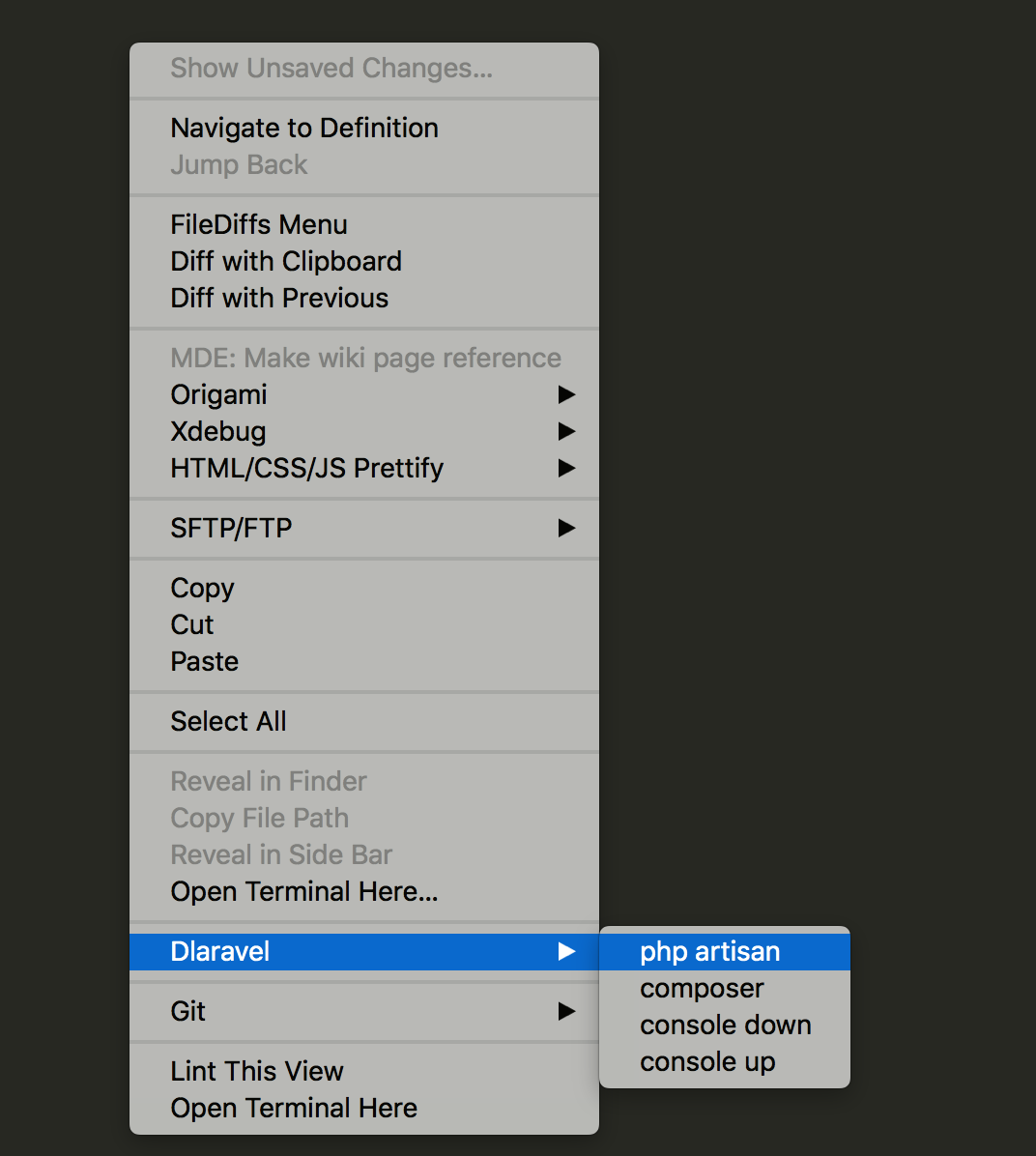Introduction
Through D-Laravel alias, we can execute artisan and composer commands in the container in an easier way.
In the docker environment, do you want to use composer to install the package? You don’t need to enter the container, or set the composer’s ce alias, and you can execute it directly in sublime.
The figure below shows the way of the command line, and the composer command is executed on the host side.

Installation:


Hotkey introduction:
1. Custom hotkeySublime Text=>Preferences=>Key Bindings, add custom hotkeys to User settings.
[
{ "keys": ["super+alt+i"], "command": "php_artisan"},
{ "keys": ["super+shift+c"], "command": "composer"},
]
2. alt+command+i Start the php artisan input panel. 
3. Shift+command+c, execute composer input panel.

4. Through shift+command+p, you can also quickly find the command to be executed:

D-Laravel right-click menu:
We can also execute the composer and artisan commands in the D-Laravel container through the right-click menu.





No Comment
Post your comment